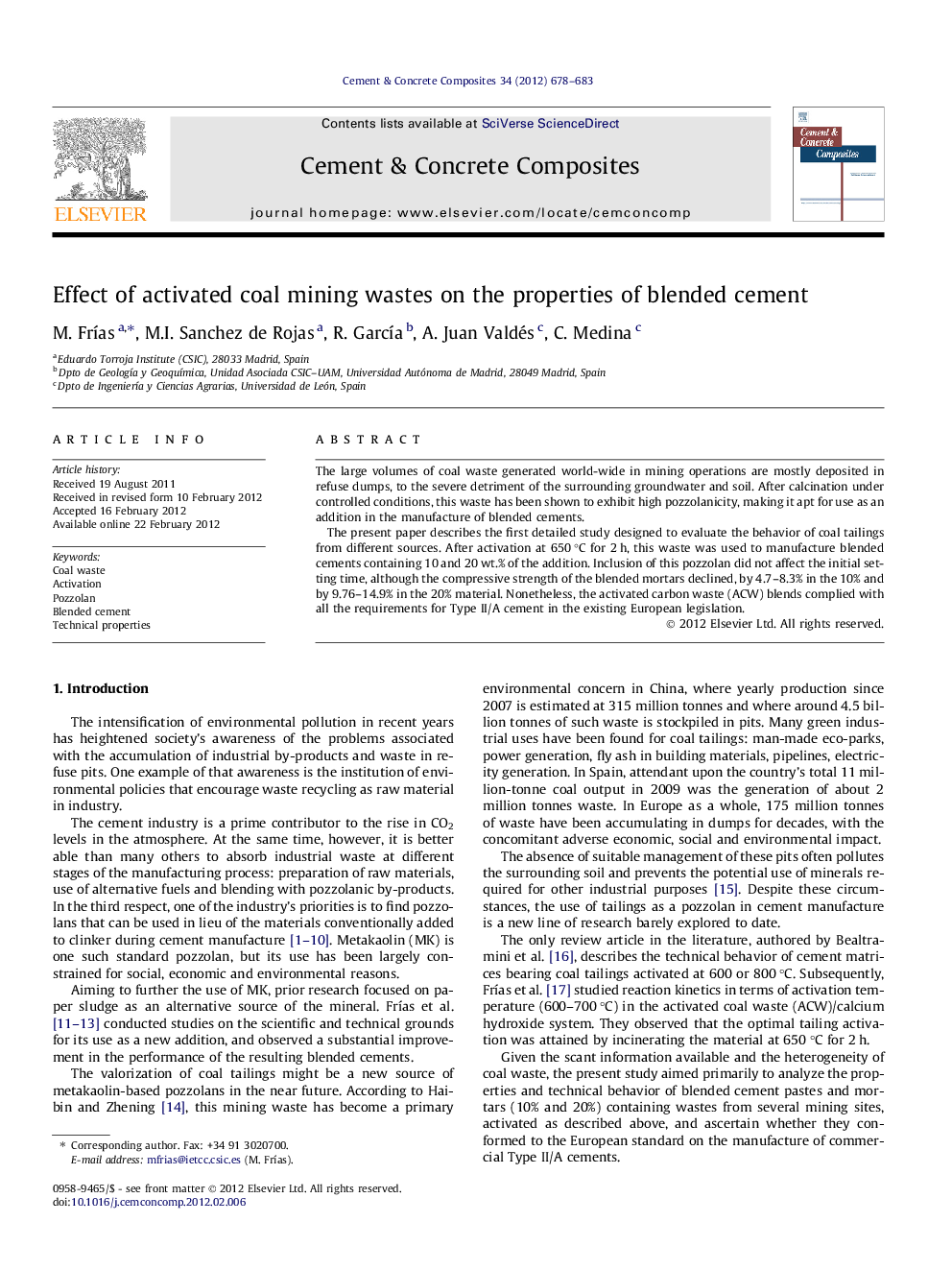| Article ID | Journal | Published Year | Pages | File Type |
|---|---|---|---|---|
| 1454914 | Cement and Concrete Composites | 2012 | 6 Pages |
The large volumes of coal waste generated world-wide in mining operations are mostly deposited in refuse dumps, to the severe detriment of the surrounding groundwater and soil. After calcination under controlled conditions, this waste has been shown to exhibit high pozzolanicity, making it apt for use as an addition in the manufacture of blended cements.The present paper describes the first detailed study designed to evaluate the behavior of coal tailings from different sources. After activation at 650 °C for 2 h, this waste was used to manufacture blended cements containing 10 and 20 wt.% of the addition. Inclusion of this pozzolan did not affect the initial setting time, although the compressive strength of the blended mortars declined, by 4.7–8.3% in the 10% and by 9.76–14.9% in the 20% material. Nonetheless, the activated carbon waste (ACW) blends complied with all the requirements for Type II/A cement in the existing European legislation.
